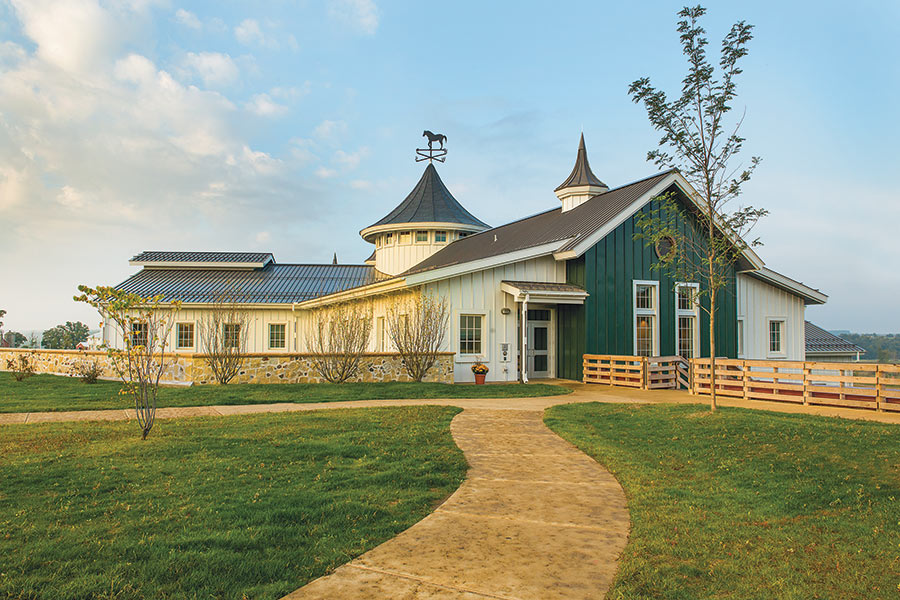
Cuningham Group Architecture drew inspiration from Wisconsin’s agrarian roots to design a new facility at healthcare software developer Epic Systems’ headquarters south of Madison. “It got to be quite literal,” said principal John Cuningham.
“The Farm,” which is the third installment at Epic’s sprawling 950-acre campus, is replete with barn, machine shed, and stable themed buildings that house nearly 1,000 offices. The 319,000-square-foot facility bridges the region’s centuries-old agricultural traditions and its burgeoning technology sector. “I like the contrast between the natural agrarian world and the high-tech world,” said Cuningham. “We thought we would design a farm building, one that would be fun to be in. We’d do high-tech stuff in a barn.”
|
|
||
Amalgamating two industries separated by more than a century of progress presented a familiar challenge: designing a workspace that is both functional and fun. The design team began with a number of guiding principals. The buildings stand three stories tall and each feature fewer than 300 offices. The smaller scale accommodates both form and function: the structures do not dwarf the rural landscape, and employees spend less time in transit. “You’re trying to make an efficient workspace on one hand, and you’re trying to fit it into a form that it fits into really well into in some cases—and in other cases you end up with sort of quirky forms under a barn roof that make for very interesting-looking offices,” said Cuningham.
The team embraced the slanted walls and windows that resulted from the pitched roof, but functionality required compromisein other areas. The Farm’s barn and shed buildings, for example, feature more windows than their agrarian antecedents, to flooding the workspace with natural light.
|
RESOURCES: |
||
|
|
||
The barn is partitioned into a creamery, a farmhouse, and traditional barn space. The project includes whimsical agrarian accents: electric blue model cows and a pig flying from the hayloft contrast porch swings and milk jugs placed throughout. Offices in the farmhouse are modeled after rural 19th-century décor. A replica chain-driven hay elevator flanks a staircase made from reclaimed barn wood that has been screen printed to look like hay. A covered bridge mingled with model sheep and outdoor seating pavilions connects the barn and machine shed. “All of the campuses are connected either by tunnel or skyway; mostly by tunnel because we like it to be as unobtrusive as possible,” said Cuningham.
A dissected tractor and portraits of Wisconsin farms cover the walls of the machine shed. Color themes match those of farm implement manufacturers. Offices in the stable are modeled after horse pens. Nameplates are winner’s ribbons pinned to each door. A stair railing is modeled after starting blocks at a horse race track.
|
|
||
Reverse engineering was used to conceptualize the themed accents. The team asked itself what would be in a normal barn or stable, said Cuningham, and then wrapped those details around the core components of the workspace. Sustainable design elements like daylighting, photovoltaics, and geothermal heating and cooling promote operational efficiencies and functionality. Noise-deafening materials used on the ceilings, floors, and walls foster employee productivity. Offices are also partitioned to prevent distractions. “It’s eerily quiet, almost. People are working in their individual offices and speak in whispers. It’s not because they have to, but because a normal voice in the hallway sounds like a yell,” said Cuningham. “It’s active, but it’s quiet.”
The vastness of the campus presented another challenge. Underground parking cuts the facility’s footprint in half and allows increased employee access. The contrast between the themed campuses—one preexisting campus is outer space themed and the other is African themed—wakes the senses. “The abrupt change is something we like. We don’t try to soften that,” said Cuningham.